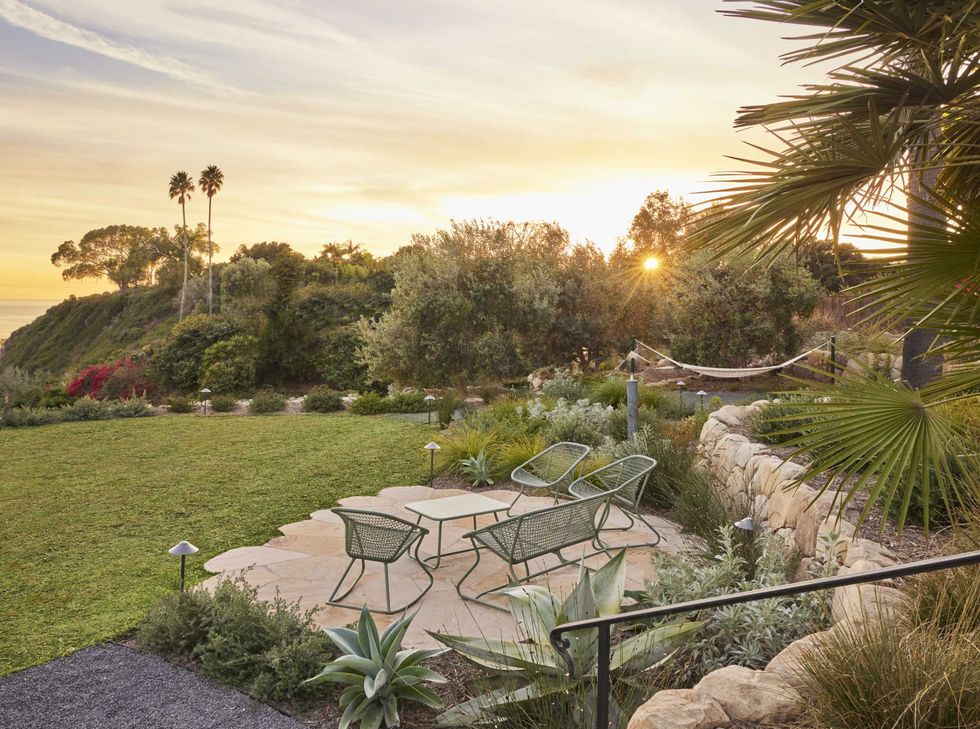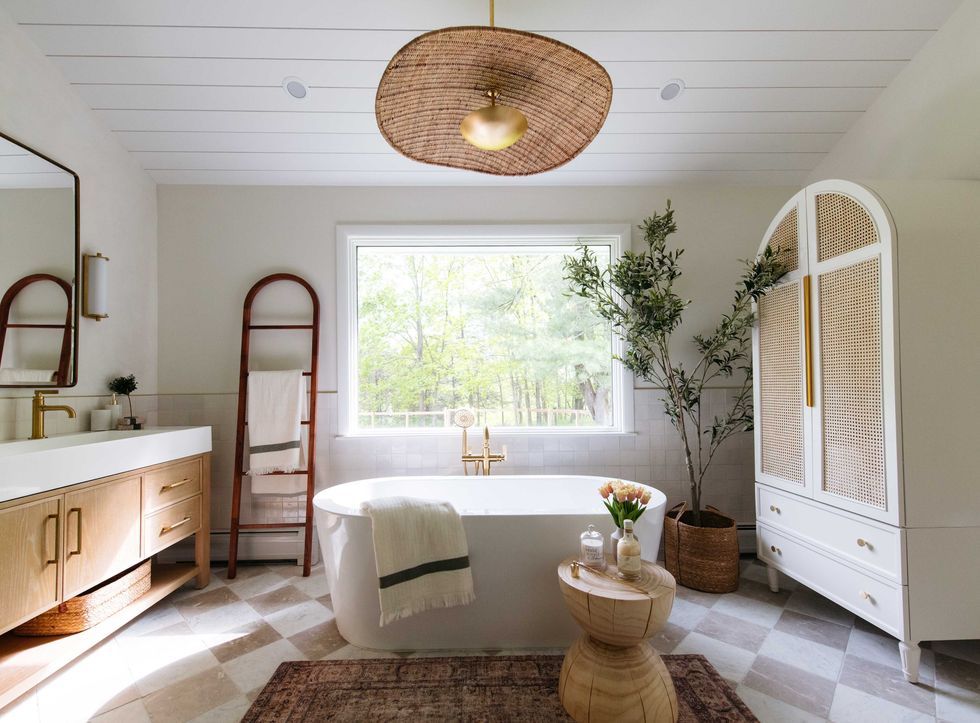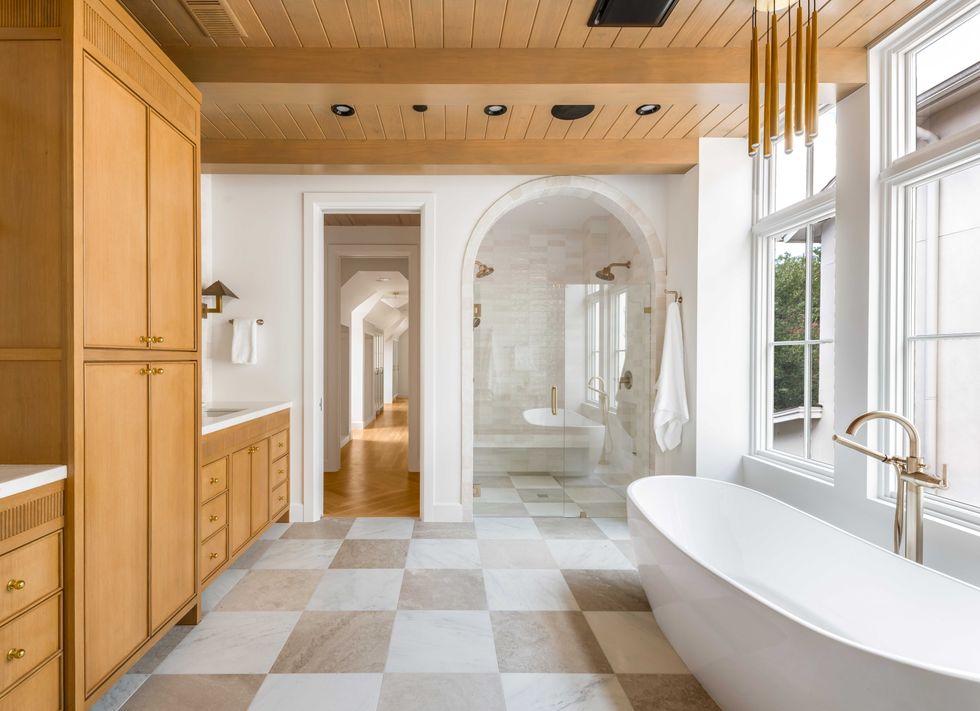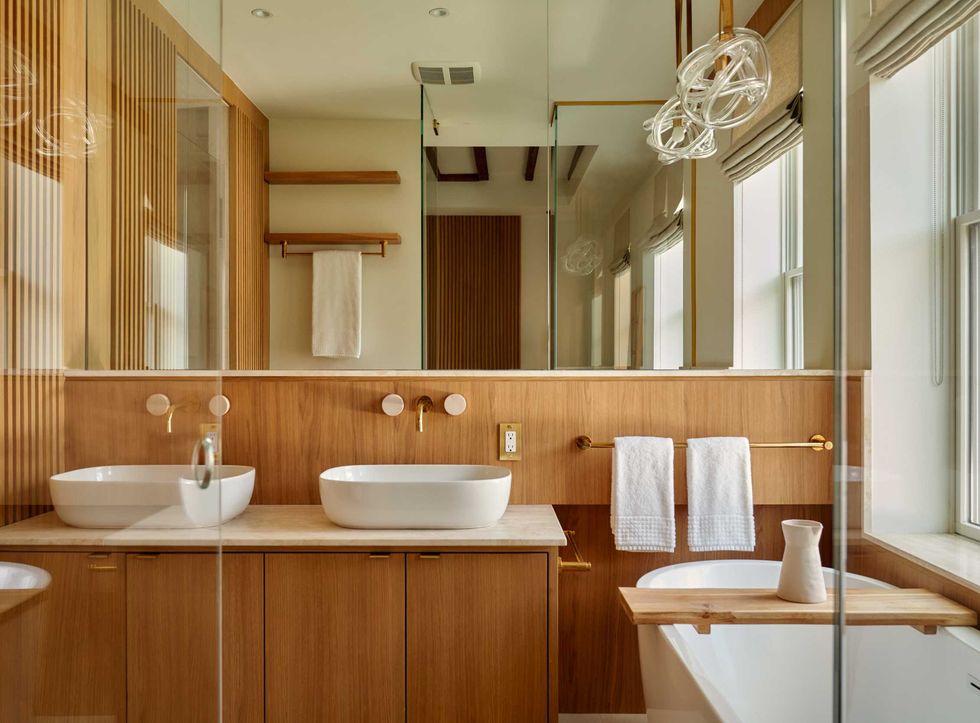Garden Guide
10 essential native shrubs for a Southwestern garden

Shrubs serve a variety of functions in the home garden, including softening a home’s foundation, creating privacy, and screening out an undesirable view. They do all this while beautifying the landscape with their foliage and, in many cases, their colorful flowers.
In the Southwest, there are numerous native shrubs that thrive in a climate where intensely hot summer temperatures and little rain is the norm. While many of them can survive on natural rainfall once established, flowering and general appearance are improved when they’re watered deeply once or twice a month in spring and fall, two or three times a month in summer, and monthly in winter.
1. Pink fairy duster
Native to the deserts of southeastern California, southern Arizona, New Mexico, and western areas of Texas; also grows in northern Mexico. Desert landscapes come alive in late winter with splashes of pink from the unusually shaped flowers of this fairy duster species. Each bloom resembles a small feather duster and attracts hummingbirds. Flowering lasts into spring and occasionally reoccurs in fall. The foliage of this low-growing shrub blends nicely into the background of the desert landscape when not in flower. Allow it to grow into its natural shape and size for best effect.
Where it will grow: Hardy to 10 degrees Fahrenheit, or minus 12.2 degrees Celsius (USDA Zone 8; find your zone)
Water requirement: Low
Light requirement: Full sun but tolerates light shade
Mature size: 2 to 3 feet tall and 3 to 4 feet wide
See how to grow pink fairy duster
Make Your Landscape Dreams a Reality
2. Chuparosa
Native to the Sonoran Desert regions of North America. Bright red flowers create a calling card for hummingbirds wherever chuparosa is planted. Blooming occurs sporadically throughout the year, hitting its peak in early spring. Heart-shaped foliage enhances the landscape but can be absent at times, depending on the availability of water. The somewhat sprawling growth habit of this desert native looks best in a natural, desert-themed landscape.
Where it will grow: Hardy to 20 degrees Fahrenheit, or minus 6.7 degrees Celsius (Zone 9)
Water requirement: Low
Light requirement: Full, reflected sun to light, filtered shade
Mature size: 3 feet tall and 4 to 5 feet wide
3. Black dalea
Native to New Mexico, Oklahoma, Texas, and into northern Mexico. In fall, just as many shrubs slow down their flower production, black dalea is just getting started. Vibrant purple flowers create unexpected interest in autumn, making this a great choice for those who want year-round color in the garden. The lacy foliage of this shrub adds an airy texture, which is shown to its greatest effect next to boulders or succulents, such as Parry’s agave or Santa Rita prickly pear.
Where it will grow: Hardy to 15 degrees Fahrenheit, or minus 9.4 degrees Celsius (Zone 8)
Water requirement: Low
Light requirement: Full, reflected sun
Mature size: 3 to 4 feet tall and 5 feet wide
See how to grow black dalea
4. Little-leaf cordia
Native to the arid Baja, Chihuahua, and Sonoran regions of Mexico. The papery white flowers of this large shrub add a rare color to the desert plant palette. As with many shrubs native to the Southwest, little-leaf cordia thrives on neglect. Other than pruning back severely every three years or so, give it enough room to grow, and it will take care of the rest. During times of extreme drought, little-leaf cordia drops its leaves to help the shrub conserve water. This characteristic is called “drought deciduous” and is shared with many other native desert shrubs.
Where it will grow: Hardy to 15 degrees Fahrenheit, or minus 9.4 degrees Celsius (Zone 8)
Water requirement: Low
Light requirement: Full sun to light shade
Mature size: 4 to 8 feet tall and 4 to 10 feet wide
See how to grow little-leaf cordia
Take in the Views or Add Privacy With Plantation Shutters
5. Yellow bells
Native to the southwestern United States. Lush green foliage and yellow trumpet-shaped flowers add a tropical element to desert landscapes. This shrub’s relatively large size makes it suitable for anchoring a forgotten corner in the landscape or for creating a colorful screen in front of a fence or wall. It will suffer frost damage when temperatures dip below freezing and can die back to the roots. Prune back frost-damaged growth in spring, which will stimulate new growth.
Where it will grow: Hardy to 5 degrees Fahrenheit, or minus 15 degrees Celsius (Zone 7)
Water requirement: Low
Light requirement: Full, reflected sun to light shade
Mature size: 8 to 10 feet tall and wide
See how to grow yellow bells
6. Florida hopbush
Native to Florida, Arizona, Mexico, and other warm regions of the world. Unlike many other shrubs, Florida hopbush is prized for its attractive foliage rather than its flowers. The narrow, bright green leaves and tall growth habit of this shrub make it especially useful as a screen, whether planted against a wall or as a hedge. While it does bloom in spring, the flowers are rather unremarkable. Florida hopbush has a pleasing, natural shape or can be sheared for a more formal look.
Where it will grow: Hardy to 15 degrees Fahrenheit, or minus 9.4 degrees Celsius (Zone 8)
Water requirement: Low
Light requirement: Full sun to light shade
Mature size: 12 feet tall and 10 feet wide but can be maintained at a smaller size
See how to grow Florida hopbush
7. Texas ranger
Native to the Chihuahuan Desert and northern Mexico. The relatively long bloom season of this popular shrub is closely tied with the rainy season in the desert Southwest. Lavender-colored flowers often appear in response to increased humidity in the air. Blooms can appear sporadically anytime in spring, summer, and into fall, with peak flowering occurring in late summer months. When growing Texas ranger, avoid the temptation to prune it into a formal shape, which only adds unneeded stress to the shrub while decreasing flowering. Allow plenty of room for it to grow, and enjoy its beauty throughout the year.
Where it will grow: Hardy to 10 degrees Fahrenheit, or minus 12.2 degrees Celsius (Zone 8)
Water requirement: Low
Light requirement: Full sun to light shade
Mature size: 5 to 8 feet tall and wide
See how to grow Texas ranger
Sit Back and Enjoy Your Native Garden
8. Woolly butterfly bush
Native from southwestern Texas into northern Mexico, where it can be found growing along washes and canyons. Marble-shaped orange flowers are held aloft over soft gray leaves, whose velvety texture will have you reaching out to touch them. As its common name suggests, woolly butterfly bush attracts butterflies with the nectar from its small flowers. It’s a great choice for gardeners in the Southwest who want to provide food for monarchs and other butterfly species. Woolly butterfly bush needs little attention other than supplemental water to keep it attractive; it can go several years before needing any pruning.
Where it will grow: Hardy to 15 degrees Fahrenheit, or minus 9.4 degrees Celsius (Zone 8)
Water requirement: Low
Light requirement: Full, reflected sun
Mature size: Up to 5 feet tall and wide
See how to grow woolly butterfly bush
9. Turpentine bush
Native to the Chihuahuan and Sonoran desert regions of California, Arizona, New Mexico, Texas, and Mexico. The coming of fall, and its cooler temperatures, is a busy time of year for turpentine bush, which bursts forth in golden-yellow flowers. Its ability to handle temperatures over 110 degrees all the way down to 5 degrees Fahrenheit makes it a suitable choice for most gardens in the Southwest. When not in bloom, finely textured foliage adds a welcome dark green color to the desert palette. The aromatic leaves smell like turpentine when crushed.
Where it will grow: Hardy to 5 degrees Fahrenheit, or minus 15 degrees Celsius (Zone 7)
Water requirement: Low
Light requirement: Full sun to filtered shade
Mature size: 3 feet tall and 5 feet wide
See how to grow turpentine bush
10. Desert ruellia
Native to the Sonoran Desert and Baja, Mexico. At first glance, desert ruellia hardly looks able to handle the high heat and dry conditions of the Southwest, yet it does so with little effort. Bright green foliage and purple flowers add beauty to the landscape for most of the year, pausing only for a couple of months in winter. This medium-size shrub has an attractive growth habit. It’s a great choice for courtyards, patios, and poolside planting areas, where it will produce little litter, unlike many other flowering plants.
Where it will grow: Hardy to 20 degrees Fahrenheit, or minus 6.7 degrees Celsius (Zone 9)
Water requirement: Low
Light requirement: Full sun to filtered shade
Mature size: 4 feet tall and 4 to 5 feet wide
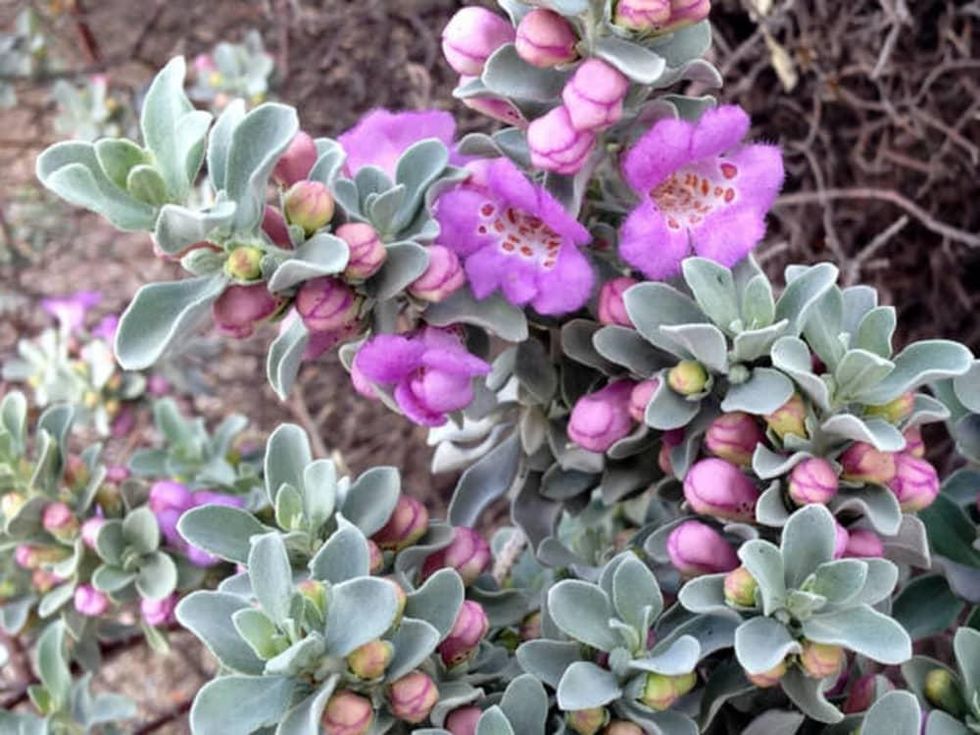


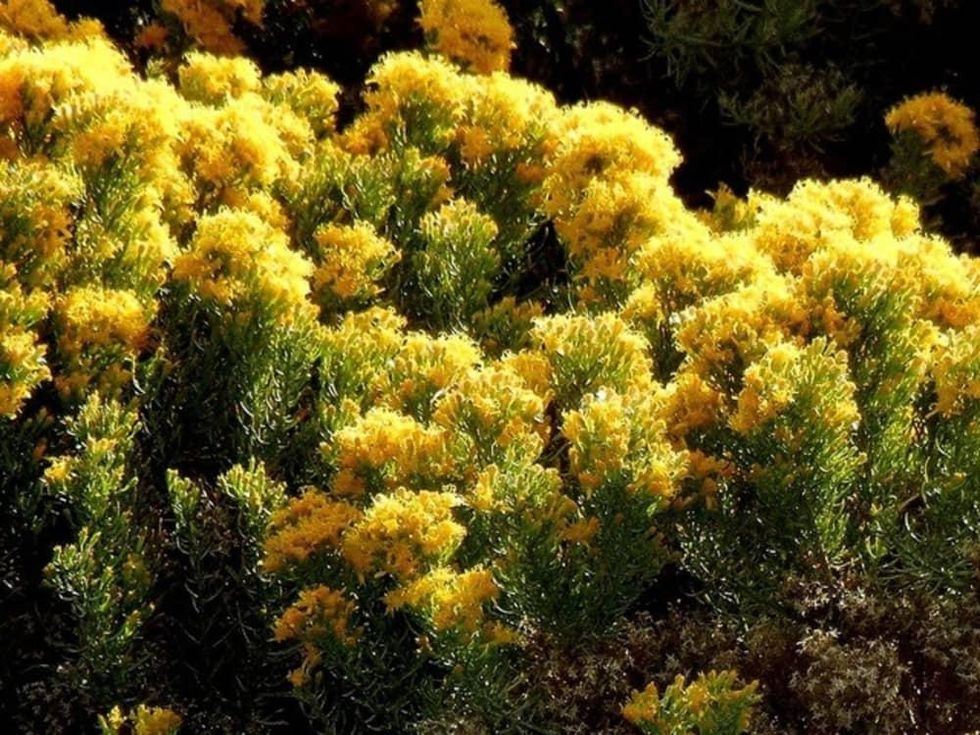

 Flat-panel cabinetry provides a seamless look that is also practical for being easy to clean.Photo by JM Real Estate Photography / Celaya | Soloway Interiors
Flat-panel cabinetry provides a seamless look that is also practical for being easy to clean.Photo by JM Real Estate Photography / Celaya | Soloway Interiors This built-in wall combines a bar with the fireplace, TV, decorative shelving, and closed storage spaces.Rendering courtesy of Houzz
This built-in wall combines a bar with the fireplace, TV, decorative shelving, and closed storage spaces.Rendering courtesy of Houzz